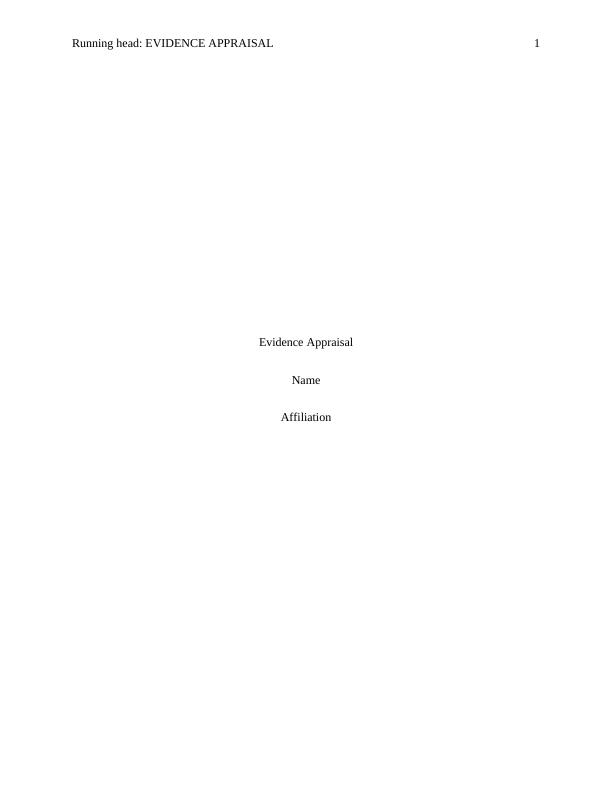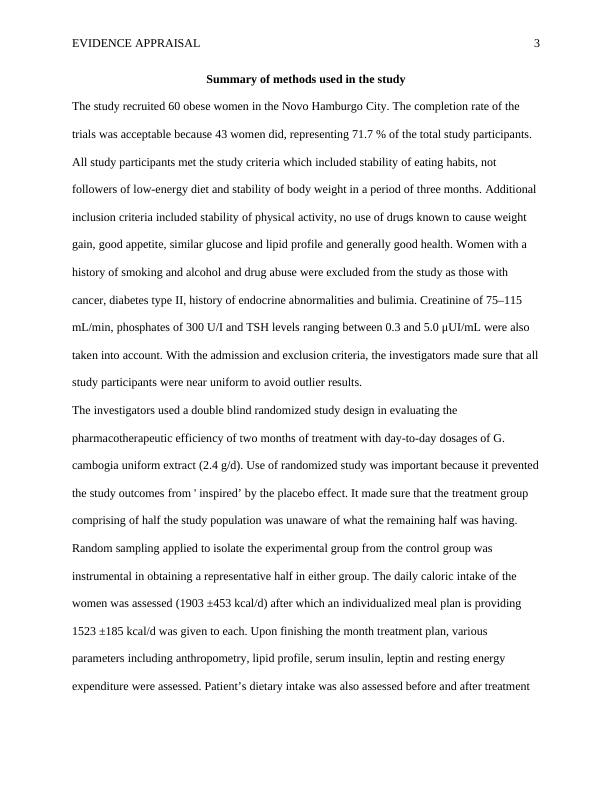Ask a question from expert
HLT1RAE Research & Evidence In Practice
8 Pages1926 Words129 Views
Australian Catholic University
Research & Evidence in Practice (HLT1RAE)
Added on 2020-02-24
About This Document
This is descriptive research that uses both quantitative and qualitative methods. The researchers wanted to see how Garcinia Cambogia medication affects weight gain or loss in obese women. The researchers gave sufficient introductory statements to provide the context for their investigation.
HLT1RAE Research & Evidence In Practice
Australian Catholic University
Research & Evidence in Practice (HLT1RAE)
Added on 2020-02-24
BookmarkShareRelated Documents
End of preview
Want to access all the pages? Upload your documents or become a member.
The Symptoms of Obesity Case Study
|11
|2399
|52
Critical Appraisal - strengths and weaknesses of the article
|7
|2135
|45
Efficacy of LI85008F in Weight Loss: Research Critique
|9
|2253
|275
Increased Self-Care Activities and Glycemic Control Rate in Relation to Health Education via Wechat Among Diabetes Patients: A Randomized Clinical Trial
|12
|3843
|20


